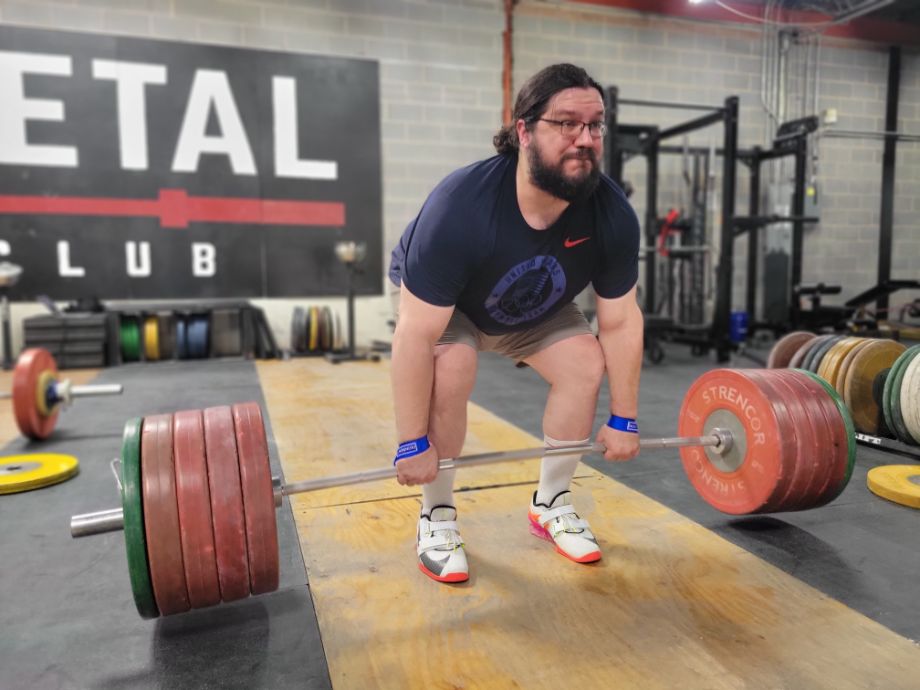We test and review fitness products based on an independent, multi-point methodology. If you use our links to purchase something, we may earn a commission. Read our disclosures.
Going to the gym is great for your physical and mental health, but some light weightlifting and cardio doesn’t cut it for everyone. Some people need more. They need the thrill of grabbing one of the best powerlifting barbells, racking as much weight as possible, entering a state of complete mental focus, and totally nailing the lift, obliterating PRs in the process.
It’s an absolute adrenaline rush, and it’s the one of the many reasons why powerlifting is enjoying a surge in popularity. Organizations like the United States Powerlifting Association (USPA) and U.S.A. Powerlifting (USAPL) have effectively tripled in size over the past decade. Competitions are more cutthroat than ever, and you’ll need some serious chops if you’re going to stand toe-to-toe with the best of the best.
Do you have what it takes to compete at the next powerlifting meet?
Caine Wilkes, OLY, USAW-L1, and GGR Staff Writer, shares his top weightlifting tips to help you get into tip-top powerlifting shape, including step-by-step instructions, a sample powerlifting workout program, and more. Read on for more!
What Is Powerlifting?
Powerlifting is a strength-based competition sport that focuses on the big three lifts—the back squat, the bench press, and the deadlift. Lifters get three chances to lift as much weight as possible on these three lifts while judges weigh in on whether or not the rep meets the minimum acceptable standards.
Body weight plays a role, too, as lifters who demonstrate great strength despite a comparatively low body weight will receive a higher score than heavier lifters that lift the same weight. To keep the competition fair, competitors are separated into as many as eight to 12 weight classes, depending on the lifting federation.
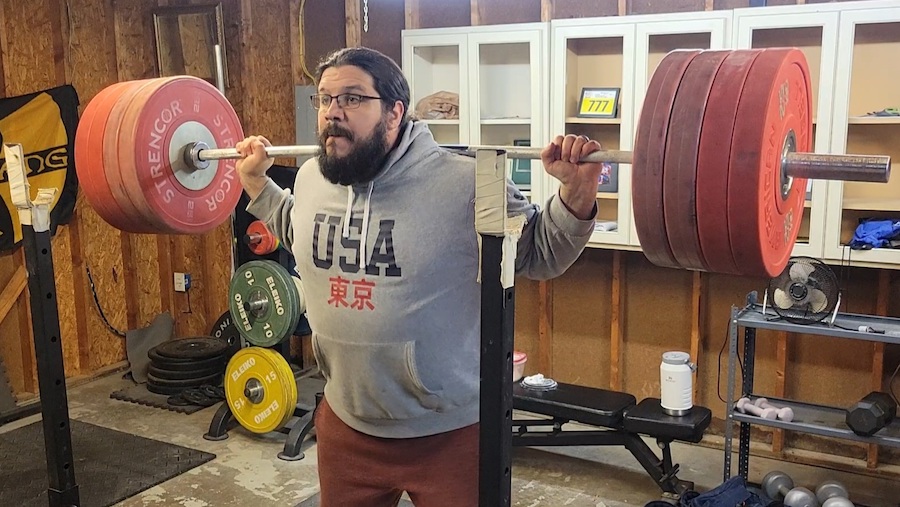
Powerlifting is further divided into two distinct classes—“raw” and “equipped.” Competitors in the “raw” class are permitted to use certain accessories, including weightlifting belts, knee sleeves, wrist wraps, and chalk, while “equipped” class competitors are also permitted to use special suits and shirts that enable them to lift heavier weights.
RELATED: Best Weightlifting Belts Guide
Powerlifting vs Bodybuilding
Both powerlifting and bodybuilding require competitors to adhere to a strict workout program in order to meet their goals, but the similarities essentially end there.
Bodybuilding workouts are geared towards muscular hypertrophy. Competitions revolve around aesthetics, with judges assigning scores based on a competitor’s muscle size, symmetry, and vascularity. Bodybuilders must therefore cater their workouts and diet around building muscle mass.
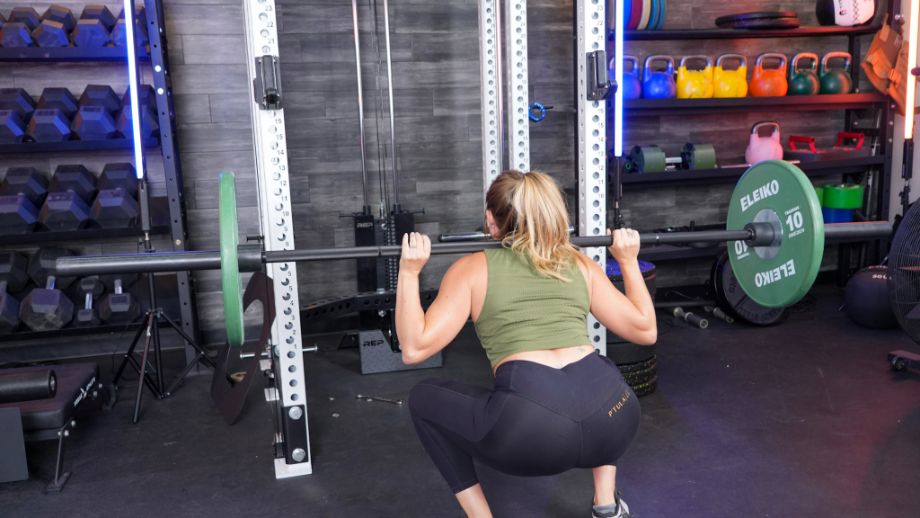
Powerlifting, on the other hand, is about strength and performance. Powerlifters tailor the routine to optimize strength gains, with muscle growth being only a byproduct of the strength training they need to succeed.
RELATED: The 5/3/1 Workout: Exploring The Legendary Powerlifting Program
Whereas bodybuilders will bulk for a period of time only to cut body fat in the weeks leading up to an event, powerlifters are often less concerned about appearance so much as they care about lifting heavy. As long as they can nail their lifts, they’re in fighting shape.
“What I like most about powerlifting is that it’s objective. It’s not a matter of opinion,” says Caine Wilkes, OLY, USAW-L1. “You can either lift that heavy barbell or you can’t, and the winner is whoever lifts the most. Compare that with bodybuilding, where your score comes down to what the judges think about how you look, and powerlifting is definitely the more straightforward sport.”
The Big Three Powerlifting Movements
Success in powerlifting boils down to your performance on just three lifts.
Back Squat
Why do it: The back squat is the premier lift for hitting your lower body muscles, including the glutes, quads, hamstrings, lower back, and core. Powerlifters might consider using “a low-bar squat” over the high-bar alternative, as it allows for “moving greater loads,” according to the Journal of Strength and Conditioning Research1.
How to do it:
- Set a squat stand or power rack to the appropriate height, load your barbell, and unrack it onto the posterior deltoid region of your upper back. Step away from the rack.
- Shift your hips back, keeping a tall chest and tight core, and slowly bend your knees, bringing your butt towards the floor. Continue until your thighs are parallel to the floor.
- Pause at the bottom, then drive through your heels and return to a standing position.
RELATED: What Muscles Do Squats Work?
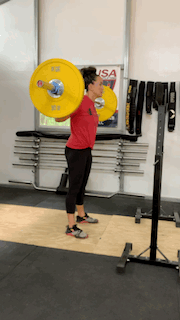
Bench Press
Why do it: The bench press is essential for building upper body strength. According to the Journal of Strength and Conditioning Research1, powerlifters can use a wide grip to safely lift heavier, as a wider grip allows you to move more weight while reducing your risk of injury.
How to do it:
- Adjust the rack to your preference, load your barbell, place a flat weight bench beneath the bar, perpendicular to the rack, and lie down.
- Grip the bar with a wide overhand grip, then unrack it and position it over your chest. Keep your upper back and shoulders pressed into the bench and both feet planted on the floor, but you may arch your back2 to increase overall power.
- Bend your elbows, keeping them close to the body, to bring the bar to your chest.
- Lightly touch your chest with the bar, then press it back to the starting position.
RELATED: Best Weight Bench
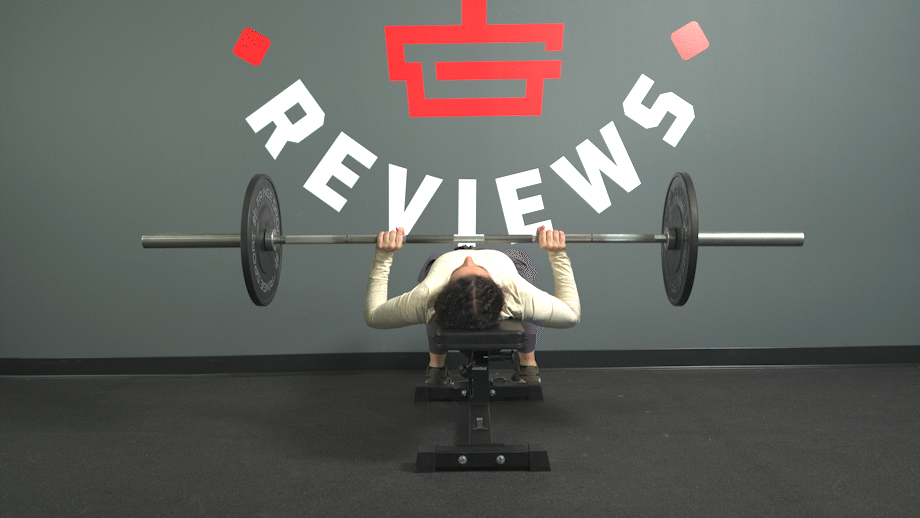
Deadlift
Why do it: “The deadlift is a full-body exercise that works your the traps, lats, forearms, erector spinae, and core, as well as a whole host of lower body muscles too,“ says Caine Wilkes, OLY, USAW-L1. “The deadlift and its variations are essential for powerlifting training, Olympic weightlifting, strongman events— anything and everything!”
How to do it:
- Stand over a loaded barbell with your feet shoulder-width apart. Shift your hips back, bend your knees, and lower yourself to grip the bar with an overhand or mixed grip.
- Drive through your heels and extend your knees as you stand, lifting the barbell as you move. Keep your back straight, core tight, weight on your heels, and eyes forward.
- Continue until you’ve reached a standing position, bringing your hips to full extension and squeezing your glutes and back muscles at the top.
- Slowly guide the bar back to the floor.
RELATED: How To Deadlift Heavier
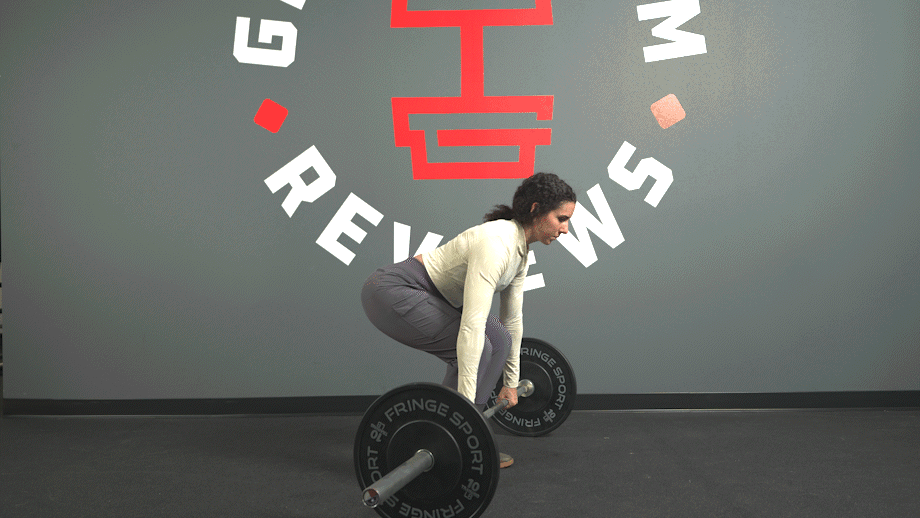
Powerlifting Workout Program for Beginners
Our beginner powerlifting program involves three training days per week.
The three main lifts serve as the cornerstone of the program, but accessory lifts will also be important for enhancing your overall strength and performance by targeting and building the same muscle groups.
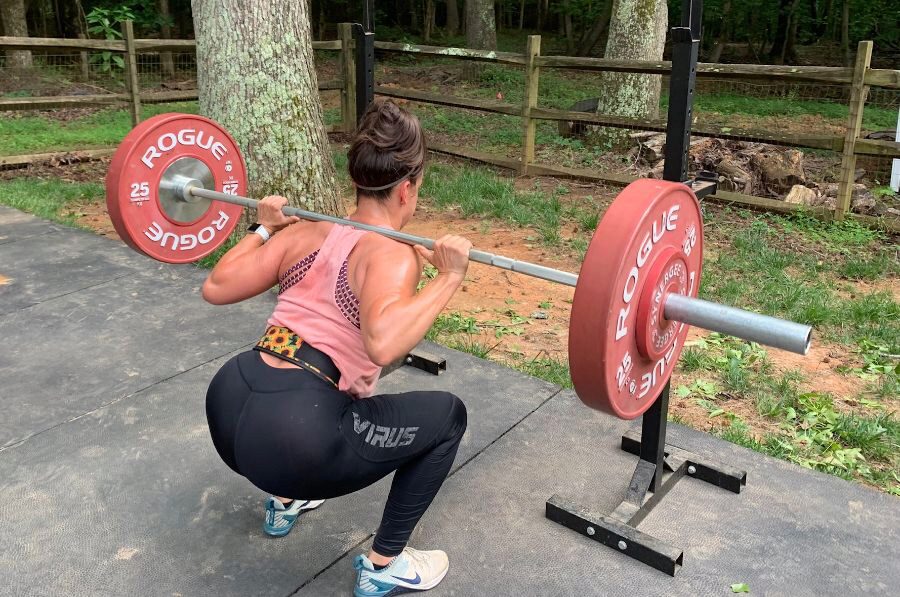
“The goal of any strength training program is to use progressively heavier weights, ultimately working up to the heaviest weights possible for your working sets,” says Caine Wilkes, OLY, USAW-L1, and GGR Staff Writer. “Utilizing a low rep scheme with heavy weights is the best way to guarantee maximum power output during each training session. We want to get to our one-rep max and increase it as often as possible.”
RELATED: Best Weight Plates
Without further ado, here is our beginner powerlifting program.
Day 1: Back Squat
| Exercise | Sets | Reps |
| Barbell Back Squat | 3 to 5 | 1 to 5 |
| Barbell Front Squat | 3 to 5 | 1 to 5 |
| Barbell Hip Thrust | 3 to 5 | 1 to 5 |
| Leg Curl | 3 to 5 | 8 to 12 |
| Plank | 3 to 5 | 30 to 90 seconds |
Day 2: Bench Press
| Exercise | Sets | Reps |
| Wide-Grip Bench Press | 3 to 5 | 1 to 5 |
| Incline Dumbbell Bench Press | 3 to 5 | 8 to 12 |
| Close-Grip Bench Press | 3 to 5 | 1 to 5 |
| Tricep Extension | 3 to 5 | 8 to 12 |
| Hanging Leg Raise | 3 to 5 | 8 to 12 |
Day 3: Deadlift
| Exercise | Sets | Reps |
| Barbell Deadlift | 3 to 5 | 1 to 5 |
| Lat Pulldown | 3 to 5 | 8 to 12 |
| Barbell Row | 3 to 5 | 1 to 5 |
| Leg Extension | 3 to 5 | 8 to 12 |
| Back Extension | 3 to 5 | 8 to 12 |
Benefits of Powerlifting Workouts
Adopting a powerlifting workout routine is a no-brainer if your ultimate goal is to actually compete in powerlifting competitions, as you’ll need ample experience with the three big lifts and above average strength if you’re going to stand a fighting chance.
Are there benefits of powerlifting workouts for the rest of us, though? The answer is yes!
May Help Increases Strength
A powerlifting training program is characterized as a high-load resistance training program, which, according to Medicine and Science in Sports and Exercise3, should produce superior strength gains compared to high volume programs.
“Powerlifting programs prioritize strength gains,” says Caine Wilkes, OLY, USAW-L1. “You should still see improvements in hypertrophy and endurance, but you’ll see the biggest increases in strength and power.”
RELATED: Hypertrophy Workout
May Help Provide Pain Relief
You’d think lifting heavy weights might lead to more pain, but studies show otherwise.
According to Clinical Rehabilitation4, study participants experienced improvements in “pain, disability, fear, catastrophizing, self-efficacy, anxiety, and depression” following an 8-week powerlifting program paired with pain education.
The results led researchers to conclude that powerlifting is “safe and beneficial when paired with pain education for chronic low back pain, with reductions in pain and disability,” leading to an overall improved quality of life for the study participants.
May Help Improve Muscle Mass and Bone Density
A study in Current Sports Medicine Reports5 lists numerous benefits associated with powerlifting and other strength-based training programs, including “improved physical performance, movement control, walking speed, functional independence, cognitive abilities, and self-esteem.”
Resistance training is especially important for combating the “3% to 8% loss of muscle mass per decade” that most inactive adults experience as they age.
A well-rounded strength training program was also shown to help increase bone mineral density by up to 3%, offering relief from “discomfort associated with arthritis and fibromyalgia” and “reverse specific aging factors in skeletal muscle.”
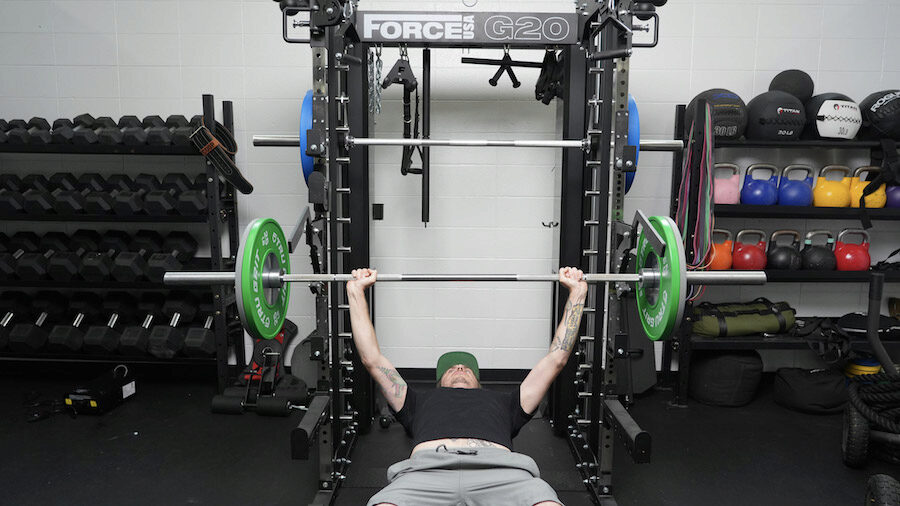
Promotes Mental Health and Well-Being
Lifting heavy weights also is linked to improved mental health.
According to JAMA Psychiatry6, “resistance exercise training significantly reduced depressive symptoms,” but strength training also improves mental fortitude, focus, and grit.
RELATED: Exercise and Mental Health
“The outside world doesn’t exist when you’re about to perform a heavy lift,” says Caine. “It doesn’t matter what you need to do at work tomorrow or at home later. None of it matters. Your success relies on your ability to put it out of mind, enter a state of complete focus, and execute.”
Powerlifting Workout: Final Thoughts
It doesn’t matter if you’re looking to dominate the next powerlifting meet or you’re simply looking for an effective strength training program to help spice up your workout routine there are loads of benefits associated with powerlifting workouts, including:
- Increased strength
- Enhanced sport performance
- Improved physical and mental health
So, if you’re ready to shake up your workout routine and incorporate some of the best strength training exercises, give our beginner powerlifting workout a try!
Powerlifting Workout: FAQs
What is a typical powerlifting workout?
A typical powerlifting workout revolves around the three main lifts required at powerlifting competitions: the back squat, bench press, and deadlift.
Workouts involve accessory work as well to further enhance performance on these lifts and support overall strength gain of the required muscle groups.
RELATED: Best Weightlifting Shoes
How many times a week do powerlifters train?
“Even advanced lifters train a conservative 3 to 4 times weekly,” says Caine Wilkes, OLY, USAW-L1, and GGR Staff Writer, “ because it’s imperative that each lift is performed with full power and intensity. Too much training volume works against that goal, so strength coaches program lots of recovery time between sessions.”
RELATED: Best Muscle Recovery Tools
Is powerlifting only three exercises?
Powerlifting competitions involve only the back squat, bench press, and deadlift, just as Olympic weightlifting involves only the snatch and clean and jerk exercises.
How long should a powerlifting workout be?
You can get in and out of the gym in as little as 30 minutes for most workouts, but powerlifting workouts require a little more time if you’re doing things right.
That’s because you’ll need extra rest between sets in order to perform at full intensity everytime. Sports Medicine7, for example, recommends resting between 3 and 5 minutes after each set, as this “produced greater increases in absolute strength.”
Plan on spending 60 to 90 minutes—including the best warm-up exercises and a cooldown—per training session.
References
1. Ferland PM, Comtois AS. Classic Powerlifting Performance: A Systematic Review [published correction appears in J Strength Cond Res. 2021 Jan 1;35(1):e1]. J Strength Cond Res. 2019;33 Suppl 1:S194-S201. doi:10.1519/JSC.0000000000003099
2. Cudlip AC, Maciukiewicz JM, Pinto BL, Dickerson CR. Upper extremity muscle activity and joint loading changes between the standard and powerlifting bench press techniques. J Sports Sci. 2022;40(9):1055-1063. doi:10.1080/02640414.2022.2046937
3. Lopez P, Radaelli R, Taaffe DR, et al. Resistance Training Load Effects on Muscle Hypertrophy and Strength Gain: Systematic Review and Network Meta-analysis [published correction appears in Med Sci Sports Exerc. 2022 Feb 1;54(2):370]. Med Sci Sports Exerc. 2021;53(6):1206-1216. doi:10.1249/MSS.0000000000002585
4. Gibbs MT, Morrison NM, Raftry S, Jones MD, Marshall PW. Does a powerlifting inspired exercise programme better compliment pain education compared to bodyweight exercise for people with chronic low back pain? A multicentre, single-blind, randomised controlled trial. Clin Rehabil. 2022;36(9):1199-1213. doi:10.1177/02692155221095484
5. Westcott WL. Resistance training is medicine: effects of strength training on health. Curr Sports Med Rep. 2012;11(4):209-216. doi:10.1249/JSR.0b013e31825dabb8
6. Gordon BR, McDowell CP, Hallgren M, Meyer JD, Lyons M, Herring MP. Association of Efficacy of Resistance Exercise Training With Depressive Symptoms: Meta-analysis and Meta-regression Analysis of Randomized Clinical Trials. JAMA Psychiatry. 2018;75(6):566-576. doi:10.1001/jamapsychiatry.2018.0572
7. de Salles BF, Simão R, Miranda F, Novaes Jda S, Lemos A, Willardson JM. Rest interval between sets in strength training. Sports Med. 2009;39(9):765-777. doi:10.2165/11315230-000000000-00000
Further reading

When it comes to bumper plates, you pretty much have one material choice and that is rubber. Read more

Learn how to become a personal trainer with this step-by-step guide written by a certified personal trainer of 7 years. Read more

Looking for a compact treadmill to start your home gym collection? Learn more about this beginner-friendly option with our ProForm 10.0 TT Treadmill review. Read more

This Freak Athlete Multi Sled review will explain how a lightweight and budget-friendly sled is great for knee pain, partner workouts, and easy storage. Read more

